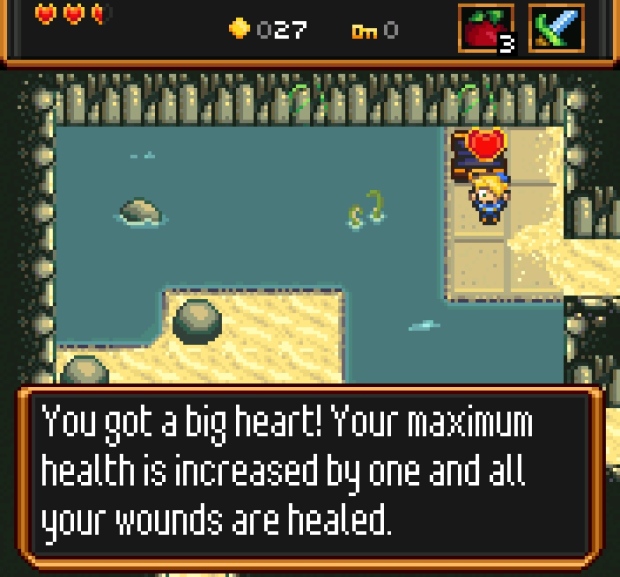by Jed Pressgrove
Video game clones inspire intense debate and create political platforms for busybodies. A reasonable critic, however, plays the clones and specifies what makes them good or bad clones (only phonies decried Flappy Bird for “ripping off” Super Mario Bros. after a cursory glance at graphics). In the wake of numerous mobile and Flappy Bird clones, Shipwreck and Blue Beacon have arrived to PC and Xbox Live Indie Games as classic Nintendo clones.
Shipwreck, developed by Brushfire Games, is a Zelda clone whose female protagonist and autosave address modern gaming concerns. Some will point to Link’s Awakening as a significant influence, but that’s a bland thematic observation: Shipwreck is more of a riff on Zelda as a genre, which helps explain our reactions to its incomplete cloning.
While Indie Gamer Chick and The XBLIG criticize the lack of enemies and the lack of a map for Shipwreck’s overworld, I welcome the lack of sleepwalking through dumb enemies and marked objectives. Shipwreck operates more as a maze than a world. The game lacks personality (townspeople parrot each other like idiots) and exploration (don’t bother looking for secrets), but this design gives more attention to a strength: dungeons.
Unlike the overwhelming majority of A Link Between Worlds, the dungeons in Shipwreck feel dangerous. This danger can come from things that you might find unfair, such as taking damage when falling to a lower floor as part of a puzzle. Is that unfair because the design severely hampers the player, or is it unfair because the game deviates from what we’re used to in Zelda? Even the idea of a bat taking two hits with your sword acts as a line in the sand. Shipwreck might have the dullest denouement in recent memory, but its minimalist defiance toward Zelda makes it a worthwhile clone.
AdamTheOtaku’s Blue Beacon is a stranger game, partly because it’s a clone of the weird Super Mario Bros. and partly because it’s goofy anyway. Like Magicians & Looters, Blue Beacon makes death funny, providing comic relief from the slippery controls. As in Mario, you bust blocks that might contain diamonds (rather than coins) or power-ups that grant suits and powers (this time of the insect variety). Goomba- and Koopa-like enemies abound.
The catch is that using special powers puts you in danger. Charging as a beetle to kill an enemy sends you flying into the air. Fly too long as a butterfly and you’ll drop like an anvil, possibly to your death (no gliding as in Mario). You don’t feel empowered in Blue Beacon so much as careful that you don’t kill yourself.
With no continues, Blue Beacon can be a frustrating experience. Thankfully, the game is brief, with the ending evoking the domestic satisfaction of eliminating pests. Oddly enough, nothing in Mario felt as real.
